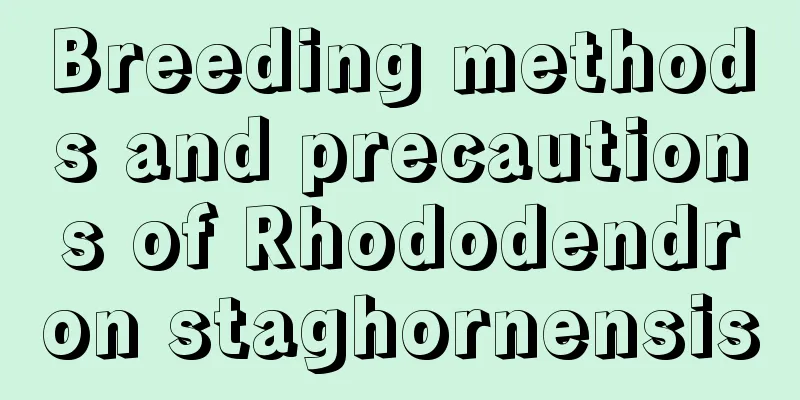Breeding methods and precautions of Rhododendron staghornensis

Soil managementThe antler azalea likes loose, fertile, slightly acidic soil. If the soil is alkaline, it will easily lead to poor growth of the antler azalea and even cause iron deficiency chlorosis. The soil must have good air permeability and drainage. Before planting, the potting soil must be sterilized to prevent the occurrence of diseases and pests. Lighting ManagementThe Azalea does not like direct sunlight, especially in the summer. Even the evening sunlight needs to be blocked. It is best to place the plant in a semi-shaded place with both shade and a certain amount of scattered sunlight. Moisture ManagementWhen cultivating Rhododendron serrata, you must pay attention to controlling watering. Too much or too little watering is not conducive to its growth. If it is too dry, the leaves of the plant will wilt and turn yellow, and the petals will become dull. Excessive watering will cause the flowers to wither prematurely. During the peak flowering period of azalea, be careful not to let water reach the flowers when watering, and also avoid the plants from being exposed to rain. It is best to water in the morning and evening. Be careful not to accumulate water in the pot, otherwise the roots will easily rot. It is best to use natural water with a little rice vinegar added to it, rather than using tap water directly. Temperature ManagementThe Staghorn Rhododendron is not cold-resistant, so you need to pay attention to keeping warm in winter. The temperature should not be lower than 8℃, and it is best to move it indoors for cultivation. The summer is hot and dry, so you need to spray water on the leaves frequently to keep them moist, and provide appropriate shading to prevent sunburn on the leaves. Pest controlCommon diseases and pests of Azalea include leaf spot disease, leaf swelling disease, aphids, sawflies, etc., which can greatly harm the growth and development of Azalea. In daily maintenance, attention should be paid to sterilization and pest control. General insect pests can be treated with liquid insecticides or manual pest control. Diseased leaves should be cut off and burned in time to prevent the spread of bacteria, and then the plants should be sprayed with liquid insecticides for sterilization. Pests and diseases are more common in hot and humid seasons, so we should pay attention to ensuring the ventilation of the soil and environment to prevent the breeding of pathogens. Pruning and shapingThe dead and diseased flowers of Rhododendron truncatum should be cut off in time to prevent them from falling into the soil and breeding bacteria. The dead flowers should be trimmed when the flowers are 80% in bloom. The pruning of Staghorn Rhododendron must be completed before the peak flowering period, otherwise it will affect its flowering in the second year. |
<<: How to save Blue Enchantress
Recommend
Cultivation methods and precautions of ball orchid
Hoya has a strong fragrance and can adapt to low-...
Is it better to fertilize vegetables at night or in the morning? (When is the best time to fertilize vegetables?)
Is it better to fertilize in the morning or in th...
How to plant Gloxinia in water
Water plugging period Water plugging is more suit...
How to care for peach trees in autumn
1. Supplement nutrients The fruit-bearing season ...
Cultivation methods and precautions of succulent Tangyin (Care methods of Tangyin plants)
As a succulent plant, Tangyin is different from m...
What fertilizer is best for figs?
Fig is not only an ornamental plant for its elega...
How to care for the newly bought pepper tree
1. Soil First observe the condition of the soil i...
Why does Milan drop its leaves?
1. Insufficient light Milan is a strong sun-lovin...
How to use cactus to graft Euphorbia paniculata
Grafting of Euphorbia pulcherrima: Choosing the r...
Peony planting methods and precautions Peony planting conditions and planting techniques
How to cultivate peony illumination Peonies do no...
How to cultivate pearl flower
1. Soil Potted plants require loose, fertile, san...
Time and method of changing soil for azalea
Time to change the soil for azalea It is necessar...
When and how to prune citrus trees
Citrus trees are planted in a large area in China...
How to propagate jade tree by cuttings
1. Leaf cuttings The leaf cutting method is very ...
The difference between bamboo leaf pepper and pepper
1. Leaf Difference The leaves of Zanthoxylum bung...









